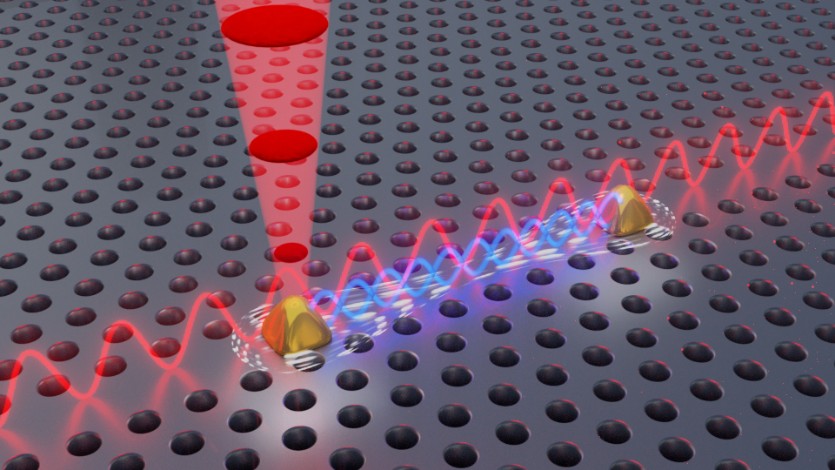Danish and German researchers said they could control two quantum light sources rather than one, thus creating a quantum mechanical entanglement.
According to the University of Copenhagen (UCPH), one of the institutions involved in the study, a quantum mechanical entanglement is a phenomenon with two light sources affect each other instantly and potentially across large geographic distances.

Illustration of two entangled quantum light sources. (Photo: Niels Bohr Institute of UCPH)
It added that entanglement is the very basis of quantum networks and central the development of an efficient quantum computer.
Before this, researchers could only be able to control one light source at a time, because light sources are extraordinarily sensitive to outside "noise" and difficult to copy. While in this study, the research team created two identical quantum light sources.
They have also developed a nanochip, which is not much larger than the diameter of a human hair, to control each light source precisely, according to the university.
"It is a crucial step to take the development of quantum technology to the next level and to 'quantize' society's computers, encryption and the internet," said Peter Lodahl, a researcher at the Niels Bohr Institute of the UCPH.
"We've revealed the key to scaling up the technology, which is crucial for the most ground-breaking of quantum hardware applications," he added.
Alexey Tiranov, the article's lead author, said the entanglement "makes it possible to create a whole network of entangled quantum light sources," with which can help researchers to "perform quantum bit operations in the same way as bits in a regular computer, only much more powerfully."
The study was published on the journal Science on January 26.


